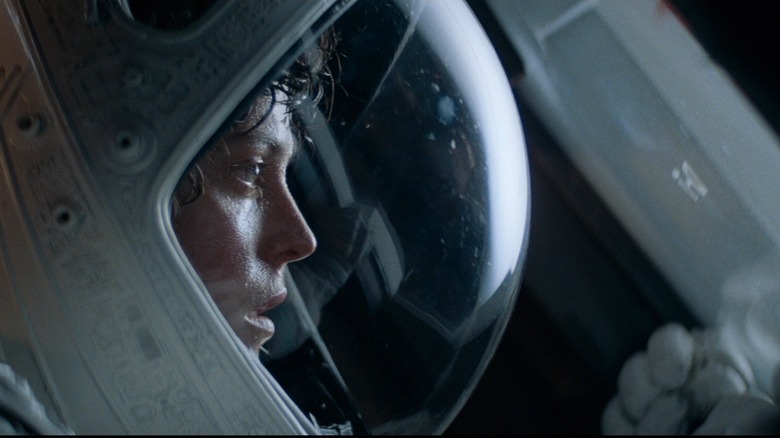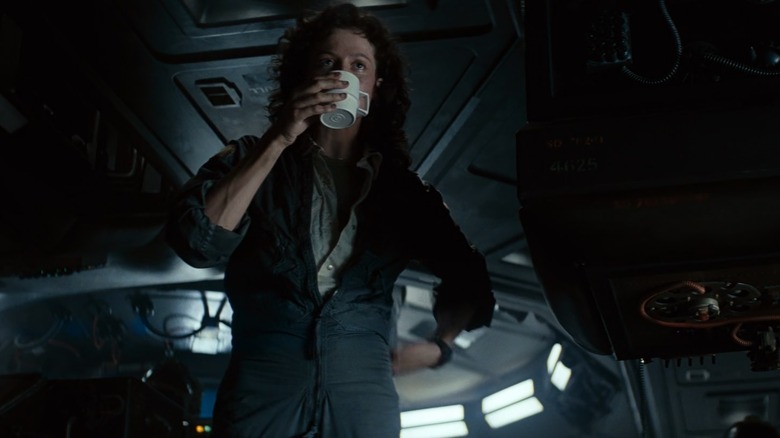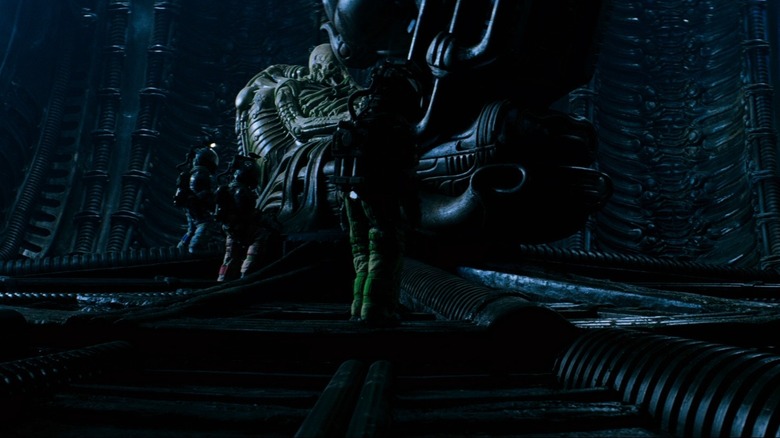H.R. Giger Sent Alien's Crew Searching For Truckloads Of Real Bones
Ridley Scott's "Alien" is a science fiction masterpiece that mixes haunted house horror with the cold vastness of space, and it took a whole team of creatives to imagine the distinct future screenwriter Dan O'Bannon had envisioned. In his BFI Film Classics book "Alien," author Roger Luckhurst contrasts concept artists Ron Cobb and H.R. Giger, who each contributed to the look and feel of the film's dystopian, corporate-run version of the year 2122. While Cobb helped make the sterile corporate side of things feel appropriately grounded, Swiss biomechanical artist Giger designed the more out-of-this-world elements. It seems like Giger himself is rather out-of-this-world, too, as Luckhurst reveals a story from the movie's set where the artist simply decided, one day, that he needed bones. Lots of bones. Truckloads of bones.
If there was ever a movie where that kind of thing might be appropriate, it's probably "Alien." While some crew members might have potentially been a little creeped out by the bones, at least they weren't working on a family comedy! Asking for a whole bunch of bones is pretty eccentric, but if it helped Giger get into the right mindset in order to design xenomorphs and everything in their world, then it was absolutely worth it.
Spooky scary skeletons on set
According to Luckhurst, producers weren't totally sold on Giger and he was only originally just paid for some sketches, but Scott and O'Bannon were excited to work with the artist and brought him on to do a whole lot more. In fact, he worked on the "Alien" sound stages alongside the rest of the production crew for six months and designed both sets and props. One day, he told someone working on the set alongside him "I want bones," which led to the set being inundated with lots and lots of bones. According to an anonymous source who worked on the film's set:
"All these trucks pull up one day loaded with bones. They had been to medical supply houses, slaughterhouses, and God knows where else, and the next day the studio was full of bones and skeletons of every possible description [...] You'd go into Giger's studio and you'd see this guy looking like Count Dracula, dressed all in black leather, with his black hair, lily-white skin and blazing eyes [...] I don't think he dares take off these clothes, because if he did you'd see that underneath he's not human. He's a character from an H. P. Lovecraft story."
It's not totally uncommon for animal bones (and various viscera) to be used in the creation of horror movies, but if the crew member's recollection is correct and they went to medical supply houses and picked up human bones, that's on another level entirely. (Then again, they did infamously use real human skeletons for "Poltergeist"!)
Creativity inspired by corpses
It's not difficult to see the influence of all of those bones on the designs of both the "space jockey" creature (who was later implied to be a member of the Mala'kak or Engineer race in Scott's prequel "Prometheus") and its ship in "Alien," as there are hints of skulls, spinal columns, and other ossuary artifacts everywhere. Giger's art ties the biological with the mechanical, so a vessel that combines the technology of an extraterrestrial space ship with forms pulled straight from human and animal anatomy is very much in his wheelhouse — I just didn't expect that he would need truckloads of bones to get it accomplished! Then again, "Alien" went on to be a massive hit that spawned an entire franchise, so maybe he was onto something.
The fact of the matter is that "Alien" is one of the great sci-fi masterpieces of the 20th Century. Whether or not Giger was some kind of Nosferatu beneath his gothic attire, however, only he knows.


